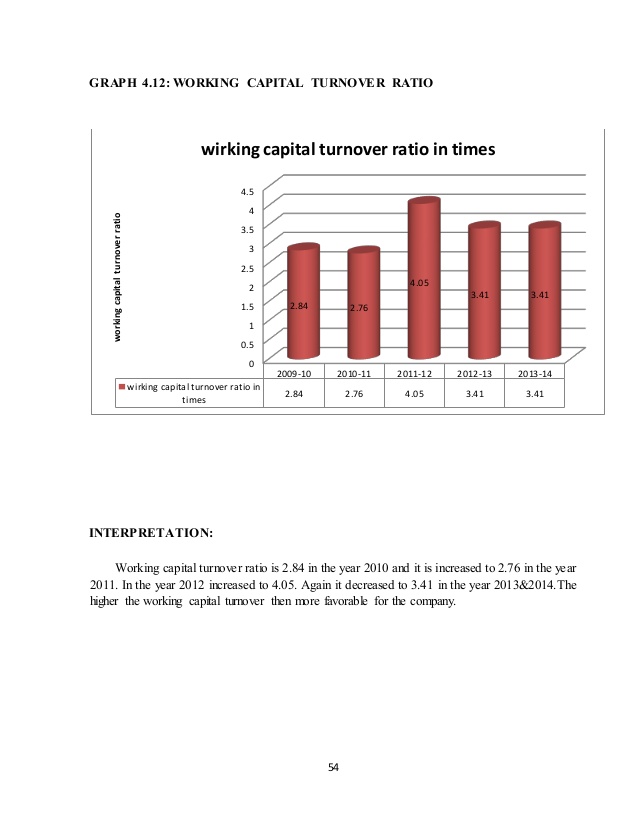
Quick ratio = (Cash + cash equivalents + accounts receivables) / current liabilities x 100Ĭash ratio = (Cash + cash equivalents) / current liabilities x 100 Liquidity is defined more and more narrowly in this context:Ĭurrent ratio = (Cash + cash equivalents + accounts receivables + inventory) There are various cash flow ratios that can be calculated using the key figures from the cash flow statement. Cash flow & working capital ratio Cash flow ratios The relevant figures can be found on the cash flow statement and in the balance sheet. Working capital = Current assets - current liabilities = Cash + cash equivalents + accounts receivables + inventory - accounts payables - wages - rent - short-term loans The following formula is used to calculate working capital:
SHOULD YOUR WORKING CAPITAL TURNOVER RATIO BE NEGATIVE HOW TO
How to calculate working capital from cash flow statement & balance sheet The operating cash flow is therefore calculated indirectly from the net income by eliminating all non-cash items and offsetting the changes in working capital against them. Operating cash flow = Net income + non-cash expenses - change in working capital The operating cash flow can also be calculated from the key figures determined in the annual financial statements: Monthly cash flow = Monthly income - monthly expenses It can be calculated for any period of time by directly subtracting expenses from income: There are different ways to calculate cash flow. Cash flow & working capital: Formula Calculating cash flow

The working capital has not changed in this case. If a company takes out a loan to finance an investment, there is a positive cash flow when the loan amount is received in the company's account and a negative cash flow when the investment is paid for with it. If a company makes an investment, a negative cash flow is generated and the working capital decreases. The cash flow is a flow quantity that is generated by every financial transaction and has an effect on the liquid funds of the company. Current assets include cash and cash equivalents, inventories and accounts receivable. Working capital represents the current assets minus the current liabilities of a company. Now that we know the definitions of working capital and cash flow, let's look at how the two are related. How are working capital and cash flow related? If it is positive, current assets are higher than current liabilities if it is negative, current liabilities are higher than current assets. Just like cash flow, working capital can be positive or negative. Working capital is the amount available to pay current liabilities. Working capital is the difference between current assets and current liabilities. The cash flow statement shows how high the cash flow was during the year and what liquidity a company has. the income is used to cover costs and to make investments. The cash flow is used to finance the operational business, i.e. If the cash flow is positive, it means that income is higher than expenditure if it is negative, expenditure is higher than income. The cash flow indicates how much money flows out of the company and how much money flows in. The cash flow summarises the cash holdings of the company (account balances, cash, cheques, etc.). Cash flow & working capital: Definition Cash flow

The two measures are similar, but not the same. Are cash flow and working capital the same?Ĭash flow and working capital are two important variables in financial analysis and business valuation. Here we show you how these two variables are related, how they are calculated and what they say about the economic performance of a company.


Cash flow and working capital play an important role in managing the operations of a company.


 0 kommentar(er)
0 kommentar(er)
